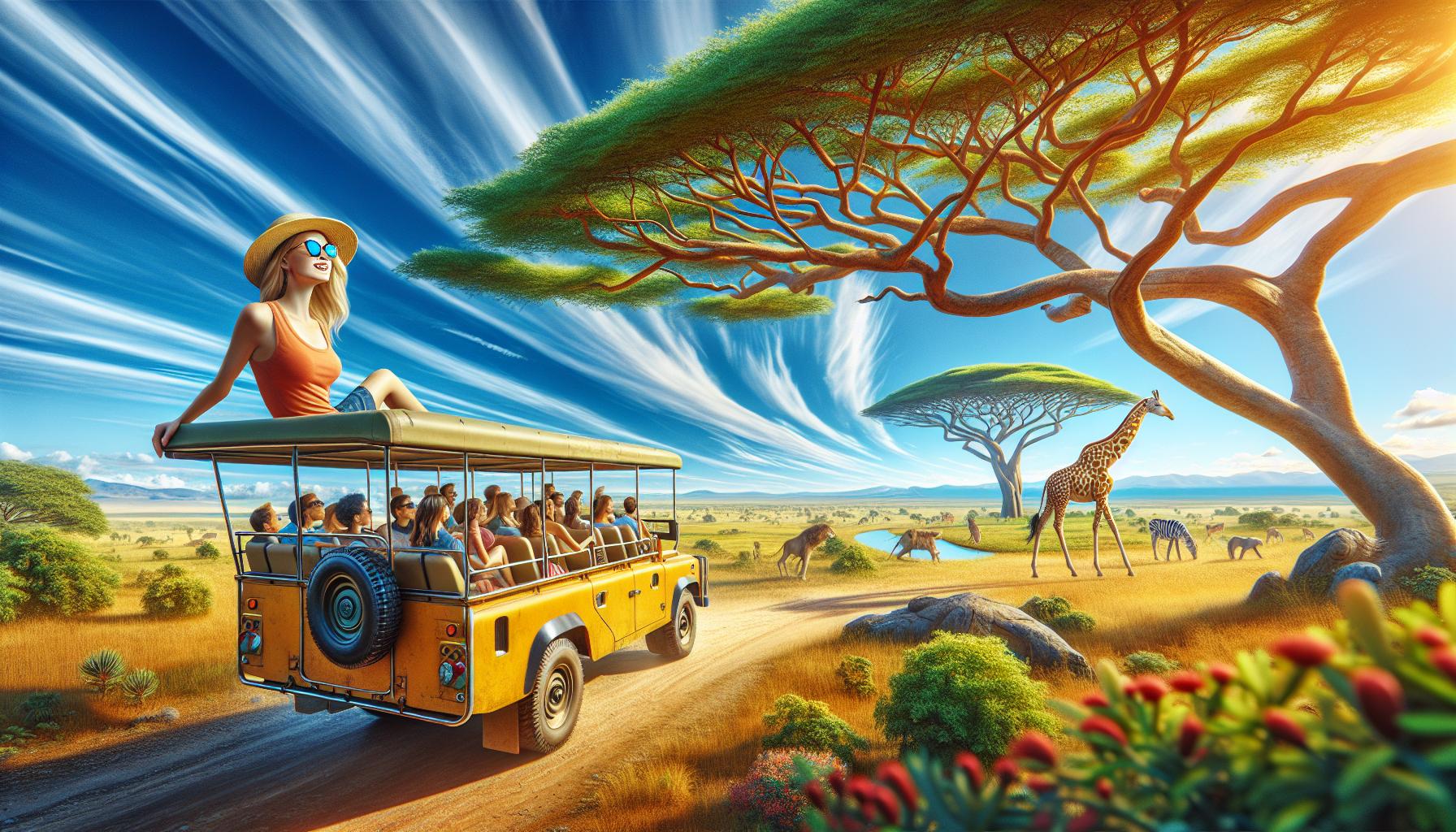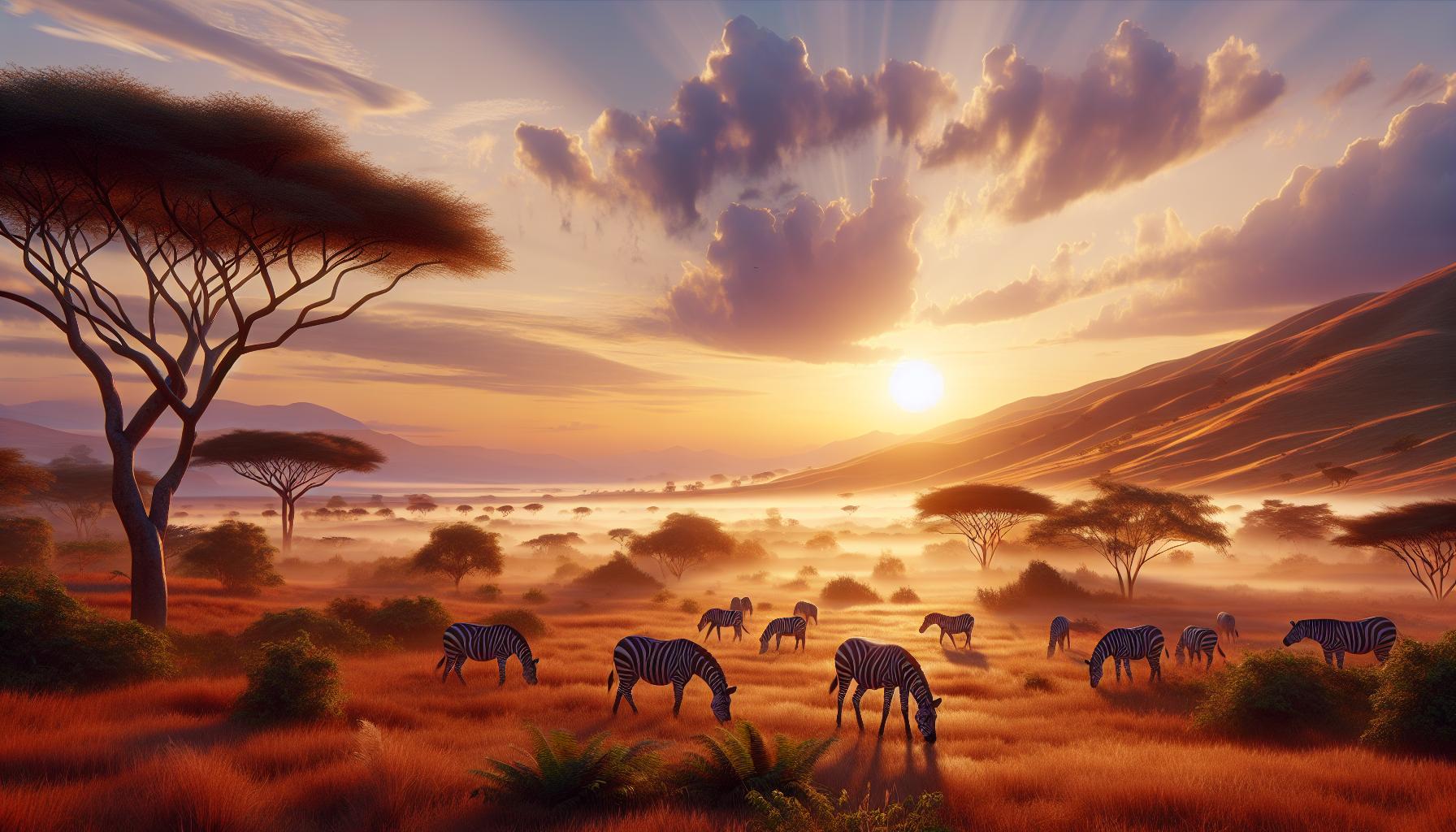Physical Address
304 North Cardinal St.
Dorchester Center, MA 02124
Physical Address
304 North Cardinal St.
Dorchester Center, MA 02124

Get ready for a wild adventure that’ll make your heart race and your camera click non-stop! Disney’s Kilimanjaro Safaris at Animal Kingdom takes visitors on an unforgettable journey through 110 acres of African savanna where majestic creatures roam freely in their naturalistic habitats.
Picture yourself bouncing along rugged terrain in an open-air vehicle while giraffes gracefully stroll by and hippos cool off in muddy waters. This isn’t your typical theme park ride – it’s an immersive expedition that brings you face-to-face with over 34 species of African wildlife including lions, elephants, zebras and countless other amazing animals. Every safari experience is unique since the animals decide where they want to be and what they want to do making each journey a one-of-a-kind adventure.
Kilimanjaro Safaris transports guests into the heart of an African savanna aboard custom-designed open-air vehicles. Trained safari guides navigate the rugged terrain through distinct habitats representing East Africa’s diverse ecosystems.
The 18-minute expedition covers 110 acres of carefully recreated African landscapes featuring:
Each safari vehicle accommodates 32 passengers in 8 rows of stadium-style seating, providing optimal viewing angles. Photo opportunities emerge throughout the journey as animals roam within feet of the vehicles.
Key features of the experience include:
Wildlife Activity Table:
| Time of Day | Animal Activity Level | Best Viewing Opportunities |
|---|---|---|
| Morning | High | Grazers feeding |
| Midday | Moderate | Predators resting |
| Evening | High | Social interactions |
Hidden rockwork barriers maintain safe distances between predators while appearing seamless to guests. Temperature-controlled rocks provide comfortable resting spots for lions while camouflaged water features ensure adequate hydration for the animals.

Safari timing plays a crucial role in maximizing wildlife encounters at Disney’s Kilimanjaro Safaris. Specific time slots offer enhanced viewing opportunities based on animal activity patterns throughout the day.
The first three hours after park opening present prime wildlife viewing conditions at Kilimanjaro Safaris. Animals display peak activity levels between 8 AM and 11 AM, engaging in feeding routines across the savanna. Lions frequently bask on the sun-warmed rocks during these cooler morning hours. Shorter wait times average 15-30 minutes during early morning slots, compared to midday peaks of 60+ minutes. The soft morning light creates optimal photography conditions for capturing clear images of grazing zebras, roaming elephants, and foraging giraffes.
The final three hours before park closing transform Kilimanjaro Safaris into an enchanting evening experience. Animals demonstrate increased activity from 5 PM to sunset as temperatures cool. Cheetahs pace their territory more frequently during dusk hours. The savanna takes on golden hues from sunset lighting, creating dramatic photo opportunities of wildlife silhouettes. Evening safaris feature enhanced spotlighting techniques that illuminate animals while maintaining their natural behaviors. Wait times decrease to 20-40 minutes during the final operating hours, offering a more relaxed safari experience.
Kilimanjaro Safaris showcases over 34 species of African wildlife across multiple habitats. Each animal roams freely in carefully designed environments that mirror their natural ecosystems.
The vast African plains host majestic herbivores grazing in open grasslands. Reticulated giraffes stretch their long necks to feed on acacia trees, while zebras display their distinctive striped patterns across the savanna. White rhinos patrol their territory near watering holes, sharing space with African elephants that cool themselves with regular mud baths. Thomson’s gazelles sprint across the plains in small herds, staying alert for predators. Greater kudu showcase their impressive spiral horns while grazing alongside eland antelopes. Ankole cattle, recognized by their massive horns, demonstrate the diversity of African bovines on the plains.
Dense vegetation areas shelter diverse wildlife populations in naturalistic settings. Lions rest on sun-warmed rocks at Pride Rock, while cheetahs patrol their dedicated territory nearby. Hippopotamuses submerge in water pools, emerging occasionally to graze on nearby grasses. Black rhinos navigate through thicker brush, displaying their distinctive hooked lips. Mandrills populate the forested regions, swinging through branches overhead. Okapi, with their zebra-striped legs, browse quietly in shadowy forest clearings. Nile crocodiles bask along riverbanks, while pink flamingos wade through shallow waters. Meerkats stand sentinel on raised mounds, scanning their surroundings from elevated positions.
Capturing memorable wildlife photos on Kilimanjaro Safaris requires specific techniques to compensate for vehicle movement and varying light conditions. The safari’s unique setup presents distinct photography challenges that demand preparation.
Fast shutter speeds minimize motion blur from the moving safari vehicle. Set the camera to shutter priority mode (Tv or S) with speeds of 1/500 second or faster. ISO settings between 400-800 accommodate varying light conditions while maintaining image quality. Continuous autofocus (AI Servo for Canon, AF-C for Nikon) tracks moving animals effectively. Image stabilization features help reduce camera shake. A burst shooting mode captures multiple frames, increasing the chances of getting sharp images of active wildlife.
The left side of the vehicle offers optimal photography positions during 75% of the safari route. Seats near the middle provide stable shooting platforms with minimal wheel well obstruction. Front-row seats capture unobstructed forward views of approaching animals. Back-row positions allow photographers to shoot over other guests’ heads. The vehicle’s elevated design creates downward angles for capturing animals in their habitats. Corner seats provide dual-side viewing opportunities for quick transitions between animal sightings.
Disney’s Kilimanjaro Safaris integrates conservation messaging throughout the expedition, educating visitors about wildlife protection initiatives in Africa. Safari guides share information about successful breeding programs for endangered species like black rhinos white rhinos during specific stops along the route.
The safari experience spotlights three key conservation programs:
Real-time conservation updates appear on digital displays at key viewing areas, showing current wildlife population statistics focusing on:
| Species | Conservation Status | Population Growth |
|---|---|---|
| Black Rhino | Critically Endangered | 5,500 individuals |
| White Rhino | Near Threatened | 18,000 individuals |
| African Elephant | Vulnerable | 415,000 individuals |
The Disney Conservation Fund actively supports multiple field projects in Africa, with information panels highlighting:
Interactive elements throughout the journey demonstrate conservation challenges facing African wildlife. Radio communications between vehicles share recent conservation successes such as animal births rehabilitation releases. Educational signs placed strategically along the route explain how habitat protection benefits multiple species within the ecosystem.
The safari experience emphasizes the connection between conservation awareness visitor participation in wildlife protection. QR codes at various stops link to the Disney Conservation Fund’s active projects allowing guests to learn more about specific initiatives supporting African wildlife.
Disney’s Imagineers combine advanced technology with meticulous attention to detail to create an authentic African savanna experience at Animal Kingdom’s Kilimanjaro Safaris. The complex operation involves carefully designed habitats, specialized animal care protocols, and innovative landscape management systems.
Disney’s landscape architects crafted distinct micro-climates across the 110-acre savanna using specialized soil compositions and drainage systems. Rock formations contain hidden barriers that separate predator species while appearing natural to guests. Automated irrigation systems maintain specific moisture levels for each habitat zone, while temperature-controlled rocks provide warming spots for animals during cooler weather. Native African grasses and trees create authentic landscapes, with over 1,000 species of vegetation strategically placed to provide shade, shelter, and food sources for the wildlife.
The safari’s animal care team includes 50 zoologists specializing in African wildlife care. Each animal receives individualized nutrition plans with specialized diets prepared in a dedicated commissary kitchen. Remote monitoring systems track animal locations and vital signs through discrete sensors integrated throughout the habitat. Veterinary facilities operate 24/7 with state-of-the-art medical equipment for preventive care and emergencies. Training programs use positive reinforcement techniques to encourage natural behaviors and facilitate voluntary medical examinations without stress to the animals.
Disney’s Kilimanjaro Safaris stands as a testament to the perfect blend of entertainment conservation and education. This immersive attraction brings the African savanna to life with its diverse wildlife authentic habitats and dedicated animal care team.
Whether visiting at dawn for active morning wildlife or during the golden sunset hours guests are guaranteed an unforgettable adventure. The combination of expert guides state-of-the-art facilities and commitment to wildlife preservation makes this experience a must-do attraction at Disney’s Animal Kingdom.
Through this remarkable journey visitors don’t just observe African wildlife—they become part of an important conservation story that extends far beyond the park’s boundaries.